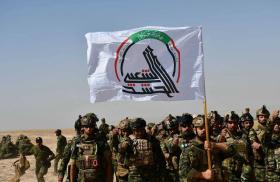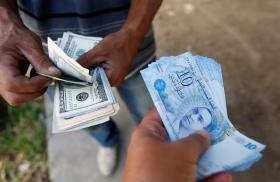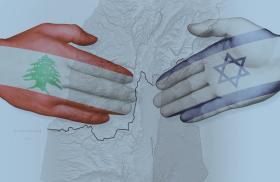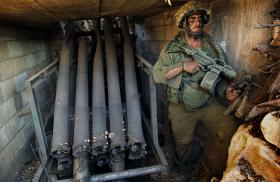Direct-Operated IRGC-QF Attack Cells in Iraq: Data Related to the Troell Case
The FBI deposition on Steven Troell’s killers and other evidence provides a closer look inside cross-militia Iraq terrorist cells operated by Iran's Qods Force and potentially linked to the facade brand Ashab al-Kahf.
The November 7, 2022, slaying of U.S. citizen Stephen Troell in Baghdad was recently detailed in a Militia Spotlight piece that drew on the unsealed twenty-eight-page FBI deposition on the murder. This follow-up analysis drills down into one aspect of the killing: the composition of the nine-man Iraqi kidnapping team assembled by Iran's Islamic Revolutionary Guard Corps-Qods Force (IRGC-QF).
Directly Operated by Qods Force
According to the FBI, the cell that abducted Troell was an IRGC-QF direct-operated task force that fused members of Iran-backed militias (see below), plus an IRGC-QF handler, Capt. Mohammad Reza Nouri (aka Muhammad Rida Husayn, Ali Asghar Nuri, and Abu Abbas), and support from “an IRGC intelligence team.” The Qods Force captain held both Syrian and Iranian citizenship, pointing to time spent operating inside Syria. The team’s task was to kidnap at least three people and murder at least seven others (including U.S. citizens) in a campaign intended to avenge the death of Qods Force commander Qasem Soleimani and build leverage over the United States through hostage-taking.
Some Iraqi officials suggest that the IRGC-QF angered the local fasail (armed groups) due to the unwanted attention that the Troell killing brought upon them and Baghdad at a sensitive moment—the launch of a new fasail-dominated Iraqi government that was seeking U.S. approval. No U.S. civilians are known to have been targeted for kidnapping or murder inside Iraq since Troell's death.
Cross-Militia "Detailing" of Young Fighters
Notably, the FBI deposition shed light on the long-suspected concept of cross-fasail Iraqi cells directly operated by the IRGC-QF. The team that killed Troell was apparently drawn from multiple unnamed militias. According to supplemental Militia Spotlight investigations, these militias included:
- Asaib Ahl al-Haq, including the shooter, Ali Abdal-Ridha Salih Alwan al-Batbuti (aka Ali Fafona), a son-in-law of AAH deputy leader Jawad al-Talibawi
- Harakat Hezbollah al-Nujaba
- Kataib Hezbollah
In an encrypted message originating from a phone used by the team’s handler, the Qods Force operator complained, “The number of young men is limited, and these special jobs require very special people.” As Militia Spotlight authors have noted previously, this points to the IRGC-QF's need for new, younger Iraqi militants who have not already been biometrically identified by Iraqi and Western intelligence agencies. The effort to create new militant cells with primary loyalty to the IRGC-QF (rather than to Iraqi fasail) may also be intentional. In the Troell case, the son-in-law of one of a senior AAH leader was "blooded" in this way, almost like an initiation (albeit one that was seemingly bungled).
An Ashab al-Kahf Angle?
Another potentially important angle is the manner in which Troell's killing became intermingled with the Ashab al-Kahf brand at an early stage. A mid-November claim of involvement in the killing was made in Ashab al-Kahf’s name, stating that the attack was a revenge operation for the 2020 U.S. killing of Soleimani and Iraqi militia leader Abu Mahdi al-Muhandis. Ashab al-Kahf soon disputed this claim and denied that it had issued the first message. The question of whether the Ashab al-Kahf brand has any special or exclusive connection to cross-fasail IRGC-QF-operated task forces merits additional research.





